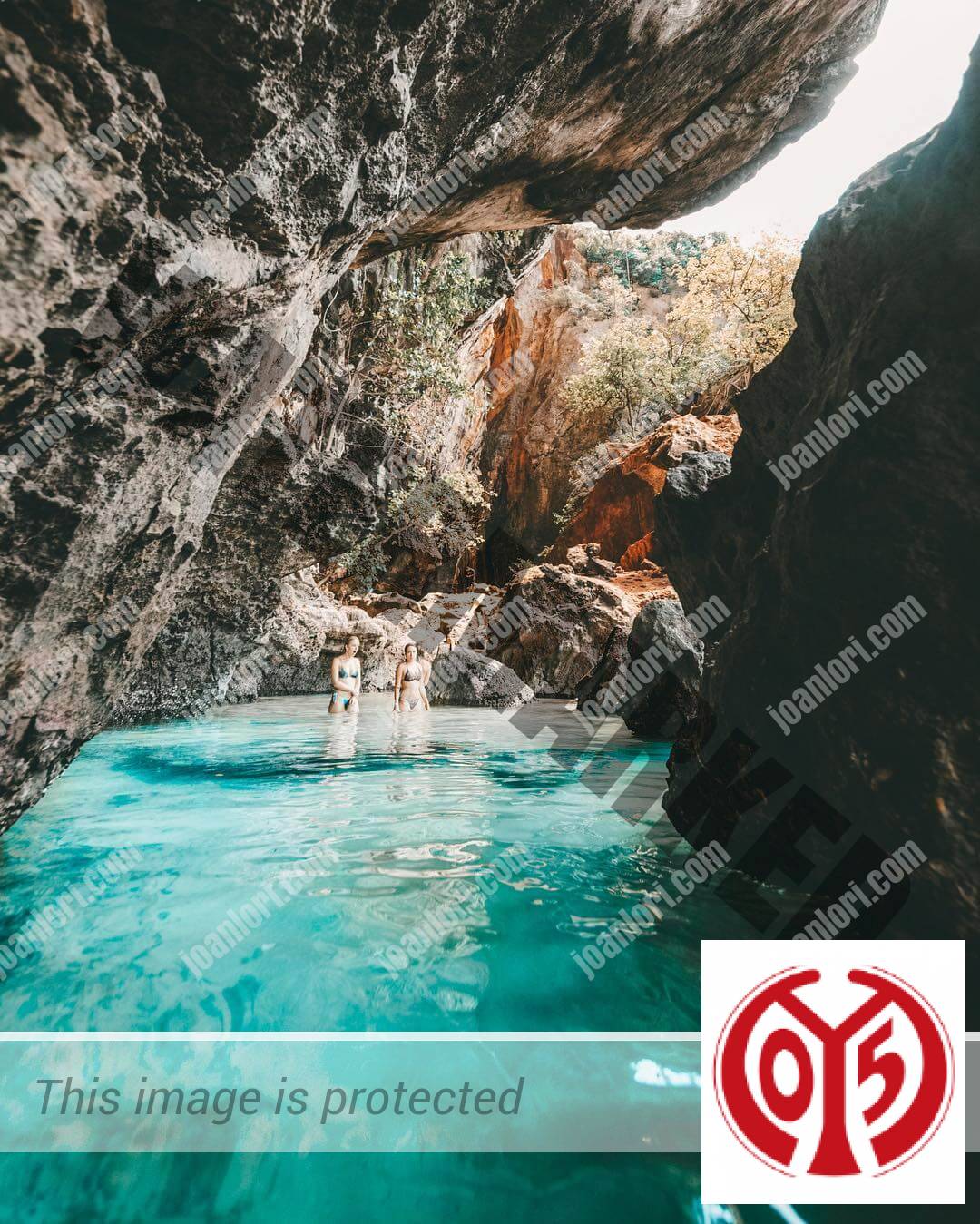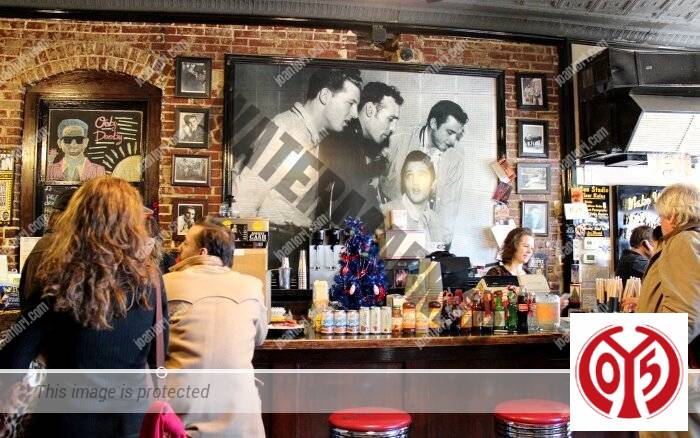
Sun Studio, fondly known as the birthplace of rock and roll, occupies a small corner on Union Avenue in downtown Memphis, Tennessee. The studio, like much of the surrounding area, looks like it never made it out of the 1950’s. It’s old, it’s shabby, but it’s where major music history was made and that’s what keeps the fans coming in droves to visit year after year.
The outside of Sun Studio has had cameos in many Hollywood films, Walk The Line being the most recent. Exterior windows are lit with glowing signs reading ‘Memphis Recording Service’, a throwback to Sun Studio’s early days.
Inside, photos, records, and vintage music memorabilia line the walls of a small cafe and gift shop. This area of Sun Studio is free, but if you’d like to see a little more you’ll need to join one of the guided group tours that run every hour on the half-hour. Little advice – buy tickets online or get there 30 minutes early. The tours fill up fast and you don’t want to be standing around for an hour waiting for the next one! Tickets are $12 for adults and free for children age 5-11. Kids under 5 are not permitted on the tour.
Our tour is led by an energetic gal named Lydia. As we wander through the first room on our tour, a small museum of sorts showcasing ancient recording equipment and relics from the 1950’s blues era, Lydia tells us how Sun Studio came to be known as the birthplace of rock and roll.
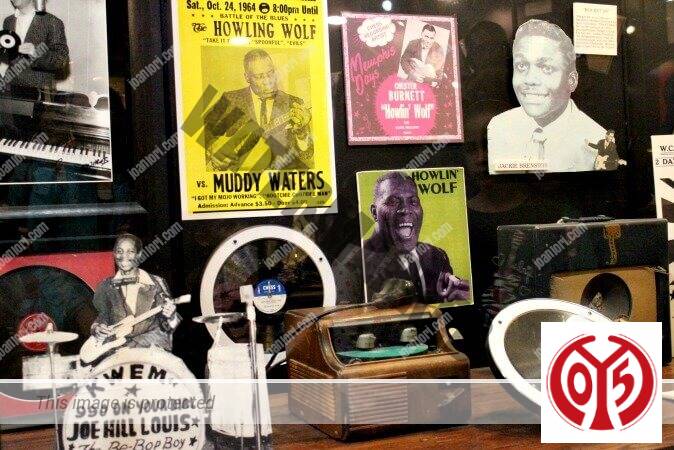
As the story goes, back when Sun Studio was still known as the Memphis Recording Service, Sam Phillips, the owner, was recording a song called Rocket 88 for Jackie Brenston with Ike Turner’s band, but Willie Kizart’s amp had been damaged on the ride to Memphis from Mississippi and was creating feedback. As a temporary fix to hold the cone in place, they stuffed the amp with wadded up newspaper. The fuzzy sound that came out when Kizart began to play again is the world’s first known example of distortion. Sam liked the new sound, recorded the track, and the rest is history!
Of course, the case could also be made that a little dancing guitar-player named Elvis Presley is the reason for Sun Studio’s place in music history. He’s pictured above with Sam Phillips and Marion Keisker, the latter of which we should all be thanking because it’s likely due to her persistence that Elvis was “discovered”.
Elvis loved listening to the rhythm and blues musicians in Memphis, and after reading a newspaper article about The Prisonaires, an incarcerated doo-wop group who recorded at Sun Studio while still in prison {good story there!}, he decided to drop in and record some tracks of his own. Keisker passed Elvis’ recording along to Phillips who originally wasn’t interested, but after Elvis recorded a second demo, Phillips brought him in to record a ballad he thought would be a good fit. Elvis, nervous to be recording for Sam, botched the song and everyone decided it was probably best just to call it a night. Then, as everyone was packing up, Elvis grabbed a mike and started dancing and singing in his unique Elvis-fashion to Arthur Crudup’s That’s All Right. That’s when Sam decided Elvis was the artist he’d been looking for – someone who could bring the sound of black musicians to the masses. Three days later Elvis’ version of That’s All Right was playing on Memphis radio, and then you know how the story goes from there. Rock and roll history, my friends. This is where it all began.
After making a brief stop in the front office where Elvis met Marion Keisker for the first time, we found ourselves in the same studio where all the magic happened over fifty years ago. Save for the pictures lining the walls, it’s all exactly as it was when Elvis recorded here in 1954. There’s even a small ‘X’ on the floor, marking the exact spot where Elvis stood when he recorded for the first time. {If that doesn’t make the hairs on your arm stand up, then you have no business calling yourself an Elvis fan!}
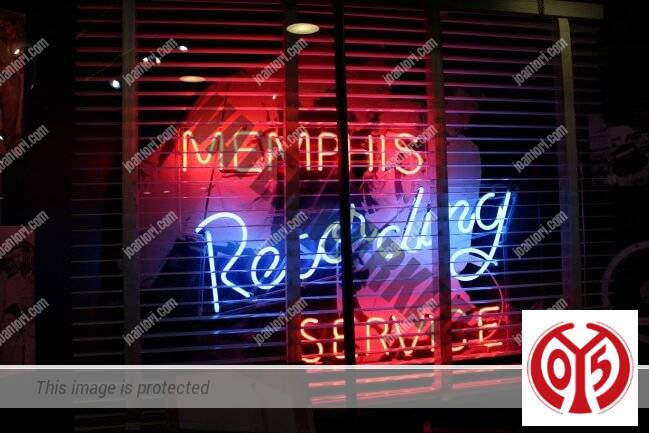
Still a functioning studio at evening after the last tour has completed, the room is full of equipment and instruments dating back to the 50’s. There’s even a drum set belonging to U2, a gift to the studio after the band recorded their album Rattle & Hum here. {Def Leppard, John Mellencamp, and Maroon 5 are just a few other familiar names who’ve recorded here.} But the most memorable piece of equipment in the room is Elvis’ very own microphone. Instead of being kept behind glass, as it likely would have been at any other museum, it’s sitting out for everyone to touch, take embarrassing photos with, or even kiss if you’re not too worried about germs. {But they’re Elvis’ germs, so they can’t really be that bad, right?}
My second favorite thing here, after the germy microphone, is the framed photo of The Million Dollar Quartet on the wall. It’s cool for two reasons – first, it’s just awesome that there was a spontaneous collaboration between Elvis Presley, Johnny Cash, Jerry Lee Lewis, and Carl Perkins and Sam thought to record it. {The latter three were all signed by Sun Records after Elvis shot to fame.} Second, this picture is hanging on the same wall that’s in the picture. In other words, this photo was taken 57 years earlier in the same spot I was standing in as I looked at it. Goosebumps.
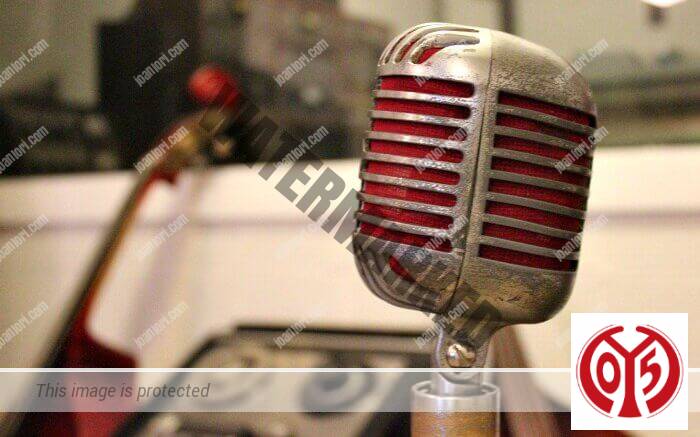
As I’m sure you’ve figured out already, this is a pretty short tour. You buy your ticket and then two rooms and forty minutes later, you’re done. Sun Studio lacks the glitz and glam of other music museums, but in my opinion it doesn’t need them. I like the musty hallways and original studio, untouched by “improvements” designed to bring in more tourists. If you’re a true music fan, the spirit of this place’ll get to you. It’s the real deal.
{For another music-related destination in Memphis, see my article on Graceland. Sun Studio offers a free shuttle to and from Graceland for your convenience.}





